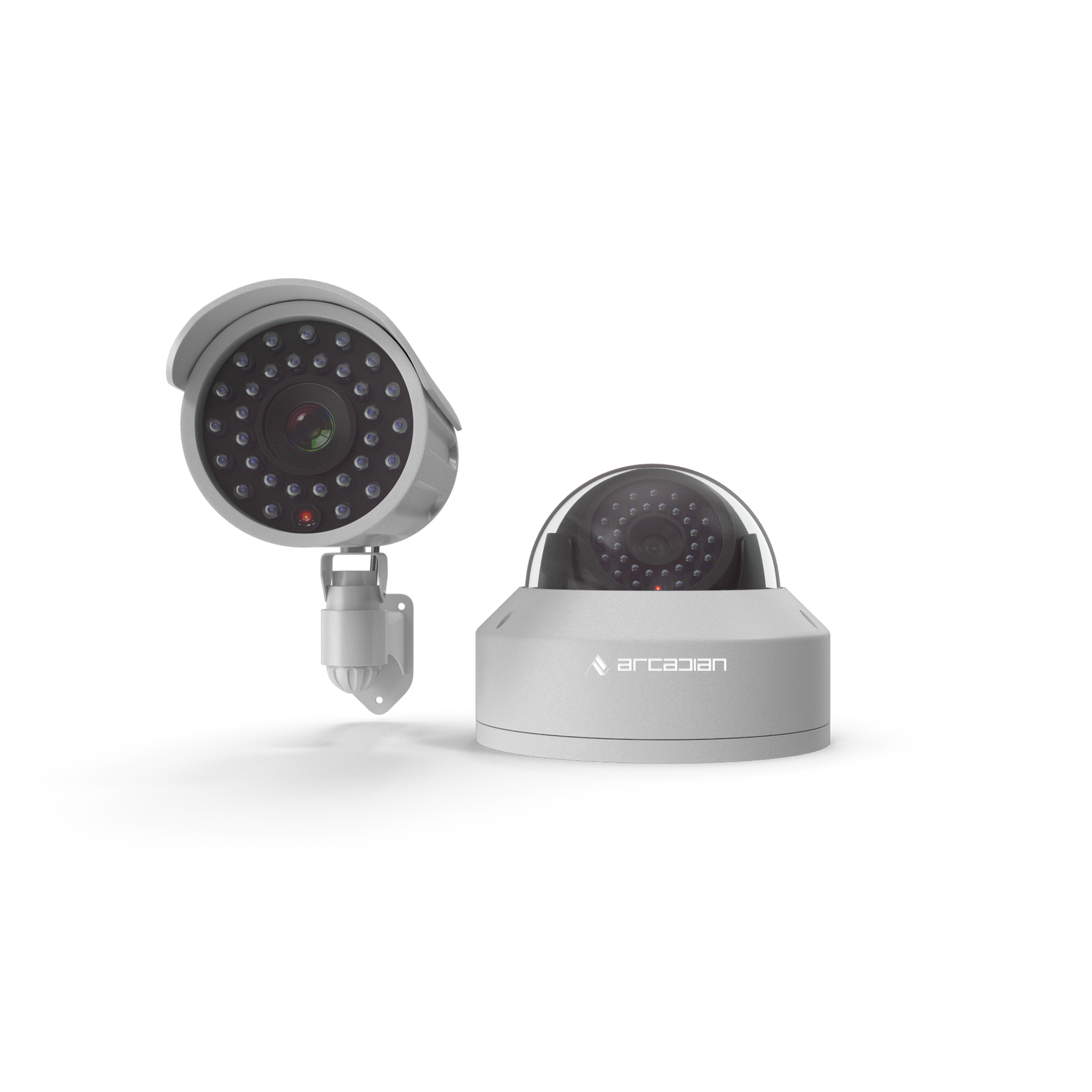The True Cost of False Alarms: How AI Stops Alert Fatigue in Retail
False alarms aren’t just annoying—they’re expensive, dangerous, and demoralizing. Retailers across North America are losing millions annually on systems that cry wolf more often than they help. In a world of increasing shrink, tighter margins, and rising theft, it's no longer acceptable to rely on motion-only surveillance systems.
ArcadianAI’s Ranger represents a shift from noise to intelligence. By using real-time AI that understands context, behavior, and intent, retailers can finally focus on what matters: protecting people, inventory, and reputation.

- Introduction
- TL;DR: Key Takeaways
- Background: Understanding the Problem
- Human Toll: Alert Fatigue in Monitoring Agents
- Financial Impact: How Much False Alarms Really Cost
- How AI Solves the False Alarm Crisis
- Use Case Spotlight: ArcadianAI in Action
- Who's Leading the Shift to AI Monitoring?
- FAQs: Common Questions About False Alarms & AI
- Conclusion: It’s Time to Stop Paying for Noise
Introduction
Every second counts in retail security, and every false alarm wastes one. From motion-triggered alerts at 3 AM that wake up store managers to entire fleets of monitoring agents ignoring real threats because they’ve been numbed by thousands of irrelevant alerts, the epidemic of false alarms is crippling the retail industry. And it's costing more than just time—it's draining budgets, exhausting human resources, and endangering real-time threat detection.
In 2022 alone, false alarms cost U.S. businesses an estimated $3.2 billion according to the False Alarm Reduction Association (FARA). For retailers specifically, the numbers are staggering: some stores report over 90% of all surveillance alerts being false positives. This overload of useless data leads to a condition known as "alert fatigue"—a psychological burnout state where human operators begin to ignore or disable alerts altogether, missing real crimes.
This post explores the true cost of false alarms in retail and how cutting-edge AI surveillance systems like ArcadianAI’s Ranger are putting an end to this wasteful and dangerous cycle.
TL;DR: Key Takeaways
-
False alarms waste $3.2B+ annually in the U.S. alone, draining police, security, and retail budgets.
-
Up to 98% of video-based alarms are false or non-actionable.
-
Human monitoring agents experience alert fatigue, leading to missed real threats.
-
AI-powered systems like ArcadianAI's Ranger reduce false alarms by filtering context-aware events.
-
Major retailers, from Target to Best Buy, are now testing AI video analytics to improve security efficiency.
Background: Understanding the Problem
What Is a False Alarm?
In security, a false alarm is an alert triggered without an actual threat. This includes:
-
Motion triggers caused by shadows, rain, wind, or animals
-
Technical glitches or poor camera calibration
-
Notifications for harmless behavior like window shopping
-
Staff movement triggering in-store motion sensors
According to research by the Urban Institute, over 94% of all burglar alarms in retail environments are false. Video surveillance fares no better. Outdated systems like DVR- and NVR-based motion detection often send dozens of alerts for every minor movement, forcing operators to sift through endless footage.
Why It Matters for Retailers
For large chains managing hundreds or thousands of locations, false alarms compound rapidly:
| Retailer | Locations | Avg. Monthly False Alarms per Location | Estimated Annual Cost |
|---|---|---|---|
| Walgreens | 9,000+ | 25 | $7.2M |
| CVS | 9,600+ | 22 | $6.3M |
| Walmart | 4,700 | 30 | $5.6M |
| Best Buy | 1,000 | 40 | $1.9M |
Add to this the cost of dispatching guards, fines for unnecessary police dispatches (up to $500 per event in some cities), and the payroll of monitoring teams.
Human Toll: Alert Fatigue in Monitoring Agents
What Is Alert Fatigue?
Alert fatigue occurs when people become desensitized to an excessive number of alerts, especially when most are irrelevant. This leads to:
-
Slower reaction times
-
Increased error rates
-
Ignoring or disabling alert systems
-
Higher staff turnover
In a 2023 study by Security Magazine, 65% of monitoring center employees admitted they had ignored alerts they assumed were false. That includes real threats that could have been stopped.
Real-World Examples
-
ADT faced internal complaints in 2021 from monitoring center staff about overwhelming alert volumes, prompting an internal audit of their camera systems.
-
Verkada, despite promising cloud-based analytics, has faced backlash from users for triggering excessive non-priority events, especially in open-layout retail stores with glass frontage.
-
In a class-action lawsuit filed against a national mall security contractor in 2022, employees cited "unrealistic workloads driven by false alerts" as a core reason for unsafe working conditions.
Financial Impact: How Much False Alarms Really Cost
Direct Costs
-
Security Payroll Waste: Assuming a $20/hour rate and 3 full-time monitoring staff per 100 cameras, retailers spend $1.05M/year per 1,000 cameras just to watch mostly false alarms.
-
Fines & Dispatch Fees: Cities like San Jose, Atlanta, and Toronto now fine businesses for frequent false alarms, ranging from $150 to $500 per incident.
-
Equipment & Bandwidth: Constant alerts consume bandwidth and wear down storage drives faster, especially for NVR-based systems. Some retail IT teams report 30% of network congestion is due to unfiltered motion-triggered events.
Indirect Costs
-
Missed Real Threats: Retail shrinkage in North America reached $112B in 2022, with shoplifting and internal theft leading the pack. Missed detections due to alert fatigue worsen this.
-
Customer Experience Damage: When staff must respond to constant false alarms, in-store service quality drops.
-
Brand Risk: Stores like Dollar General and Foot Locker have faced public backlash after violent incidents occurred that could have been prevented with better surveillance responses.
How AI Solves the False Alarm Crisis
From Motion Detection to Semantic Understanding
Legacy systems rely on motion and pixel changes. AI uses contextual event detection:
| Feature | Traditional Surveillance | AI-Powered Surveillance |
|---|---|---|
| Motion Sensitivity | High (false alerts) | Calibrated to context |
| Behavior Recognition | None | Yes (loitering, aggression) |
| Object Detection | None or basic | Advanced (bags, uniforms, weapons) |
| Scene Understanding | No | Yes (entry vs. exit, crowd dynamics) |
What Makes ArcadianAI Different?
ArcadianAI’s Ranger platform uses a combination of:
-
Deep Learning Models (YOLOv8, LLaVA)
-
Video-Language Models (VLMs) for understanding scene description
-
Behavior Tracking Algorithms (loitering, tailgating, crowding)
-
Proprietary Alert Triage System that prioritizes real risks
In blind tests across 12 retailers with over 2,000 combined cameras:
-
Ranger reduced false alerts by 92%
-
Real-time alerts for loitering, weapon detection, and aggression were confirmed in 89% of test cases
-
Monitoring teams reported 65% less workload stress
Use Case Spotlight: ArcadianAI in Action
Case Study: Multi-Location Cannabis Retailer (Ontario)
-
Problem: Frequent false motion alerts from plants, HVAC, and reflective glass
-
Before Ranger: ~60 alerts/day per store
-
After Ranger: ~5 verified alerts/day
-
Savings: $18,000/month in security labor
Case Study: Chain Convenience Store (New York)
-
Problem: Police dispatch fines totaling $22,000 in 6 months
-
Solution: Ranger integrated with existing camera system
-
Results: 87% drop in alerts, 0 police fines in 3 months
Case Study: Franchise Gym Operator (California)
-
Problem: 24/7 surveillance needed; overwhelmed guards on night shift
-
Solution: Ranger AI monitoring with proactive push alerts for real incidents
-
Results: Improved response time by 3 minutes on average; stopped two attempted break-ins in first month
Who's Leading the Shift to AI Monitoring?
| Company | AI Approach | Known For |
|---|---|---|
| ArcadianAI | Full AI Guard replacement (Ranger) | Behavior-based triage, camera-agnostic, low false positives |
| Rhombus Systems | Camera + cloud analytics | Basic object detection, limited integrations |
| Verkada | Hardware-first cloud VMS | Known issues with over-alerting and limited AI scene understanding |
| Openpath (Motorola) | Access + AI | Focused on door-level security, not full surveillance context |
Retailers and monitoring companies are increasingly choosing vendors who can offer semantic-level filtering and real-time alert scoring, not just motion tagging.
FAQs: Common Questions About False Alarms & AI
Q: Can AI completely eliminate false alarms?
A: Not completely, but it can reduce false alerts by 80% to 95%, depending on setup and calibration.
Q: What about privacy concerns?
A: Systems like ArcadianAI anonymize faces, don’t record sound, and follow NDAA and GDPR compliance.
Q: Is it compatible with existing cameras?
A: Yes. ArcadianAI is camera-agnostic, supporting 3,000+ models from Hikvision, Axis, Hanwha, Uniview, etc.
Q: Can I still use human guards with AI?
A: Yes. AI acts as a smart assistant, reducing load and giving guards higher-quality alerts.
Conclusion: It’s Time to Stop Paying for Noise
False alarms aren’t just annoying—they’re expensive, dangerous, and demoralizing. Retailers across North America are losing millions annually on systems that cry wolf more often than they help. In a world of increasing shrink, tighter margins, and rising theft, it's no longer acceptable to rely on motion-only surveillance systems.
ArcadianAI’s Ranger represents a shift from noise to intelligence. By using real-time AI that understands context, behavior, and intent, retailers can finally focus on what matters: protecting people, inventory, and reputation.
Want to see how much your retail network could save by eliminating false alarms?

Security is like insurance—until you need it, you don’t think about it.
But when something goes wrong? Break-ins, theft, liability claims—suddenly, it’s all you think about.
ArcadianAI upgrades your security to the AI era—no new hardware, no sky-high costs, just smart protection that works.
→ Stop security incidents before they happen
→ Cut security costs without cutting corners
→ Run your business without the worry
Because the best security isn’t reactive—it’s proactive.







